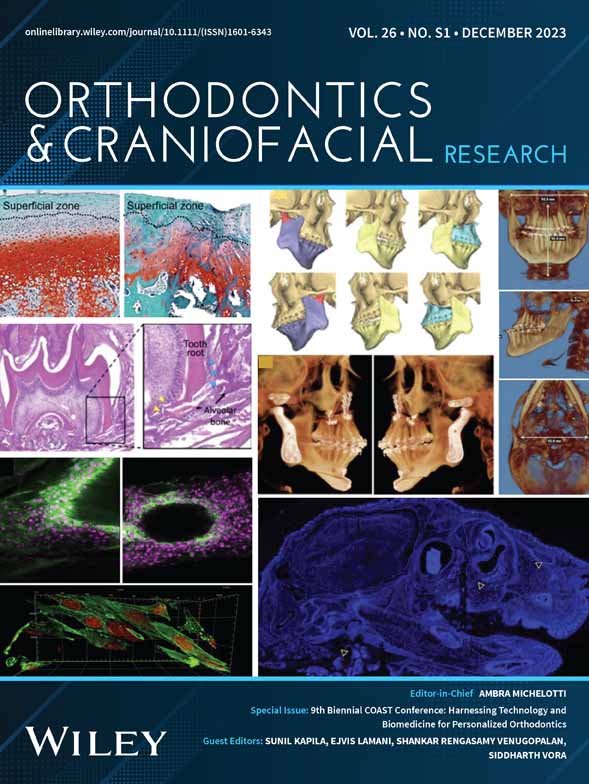Colour stability of 3D-Printed orthodontic brackets using filled resins
Abstract
Objective
To determine the effect of common beverages and accelerated aging on the colour stability of filled resins, which could potentially be used for fabrication of 3D-printed orthodontic brackets.
Materials and Methods
GR-17.1 (shades A1, A2, and A3), and GR-10 Guide resins (pro3dure medical, Eden Prairie, MN) were printed on an Asiga MAX UV printer into discs 2 mm thick, with a diameter of 10 mm, and then post-print processed as per manufacturer's instructions. Discs were immersed in 5 mL of coffee, tea, red wine, or distilled water for 7 days. Another group was subjected to accelerated aging in accordance with ISO Standard 4892-2. Ten samples were produced per resin, per treatment condition. Colour measurements were taken on the discs before and after treatment using a spectrophotometer against white and black reference tiles to assess colour and translucency differences with the CIEDE2000 colour difference formula.
Results
While initial colour of the printed resin discs was acceptable, all resin groups underwent significant colour change during the experiment. Red wine and coffee produced the greatest colour and translucency change, followed by tea, with accelerated aging producing the least change in colour and translucency.
Conclusion
The 3D-printed resins tested underwent significant changes in colour and translucency following exposure to endogenous and exogenous sources of staining, which may affect their acceptability for fabrication of aesthetic orthodontic brackets.
CONFLICT OF INTEREST
All authors report a grant from The American Association of Orthodontists Foundation during the conduct of the study. Dr. Kasper reports grants from The American Association of Orthodontists Foundation, the Osteo Science Foundation, and Align Technology, outside the submitted work.
Open Research
DATA AVAILABILITY STATEMENT
The data that support the findings of this study are available from the corresponding author upon reasonable request.




